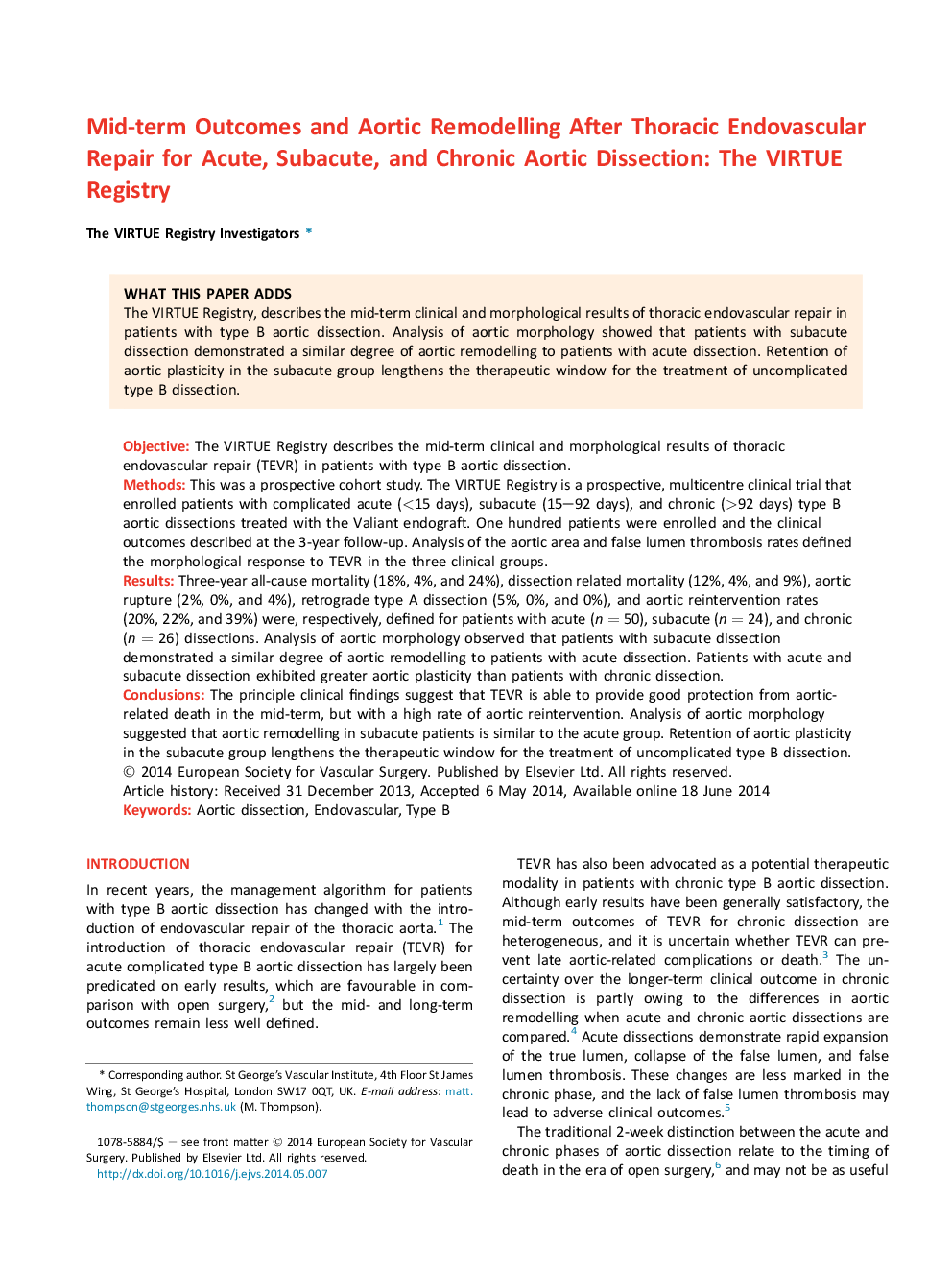| Article ID | Journal | Published Year | Pages | File Type |
|---|---|---|---|---|
| 5958121 | European Journal of Vascular and Endovascular Surgery | 2014 | 9 Pages |
ObjectiveThe VIRTUE Registry describes the mid-term clinical and morphological results of thoracic endovascular repair (TEVR) in patients with type B aortic dissection.MethodsThis was a prospective cohort study. The VIRTUE Registry is a prospective, multicentre clinical trial that enrolled patients with complicated acute (<15 days), subacute (15-92 days), and chronic (>92 days) type B aortic dissections treated with the Valiant endograft. One hundred patients were enrolled and the clinical outcomes described at the 3-year follow-up. Analysis of the aortic area and false lumen thrombosis rates defined the morphological response to TEVR in the three clinical groups.ResultsThree-year all-cause mortality (18%, 4%, and 24%), dissection related mortality (12%, 4%, and 9%), aortic rupture (2%, 0%, and 4%), retrograde type A dissection (5%, 0%, and 0%), and aortic reintervention rates (20%, 22%, and 39%) were, respectively, defined for patients with acute (n = 50), subacute (n = 24), and chronic (n = 26) dissections. Analysis of aortic morphology observed that patients with subacute dissection demonstrated a similar degree of aortic remodelling to patients with acute dissection. Patients with acute and subacute dissection exhibited greater aortic plasticity than patients with chronic dissection.ConclusionsThe principle clinical findings suggest that TEVR is able to provide good protection from aortic-related death in the mid-term, but with a high rate of aortic reintervention. Analysis of aortic morphology suggested that aortic remodelling in subacute patients is similar to the acute group. Retention of aortic plasticity in the subacute group lengthens the therapeutic window for the treatment of uncomplicated type B dissection.
